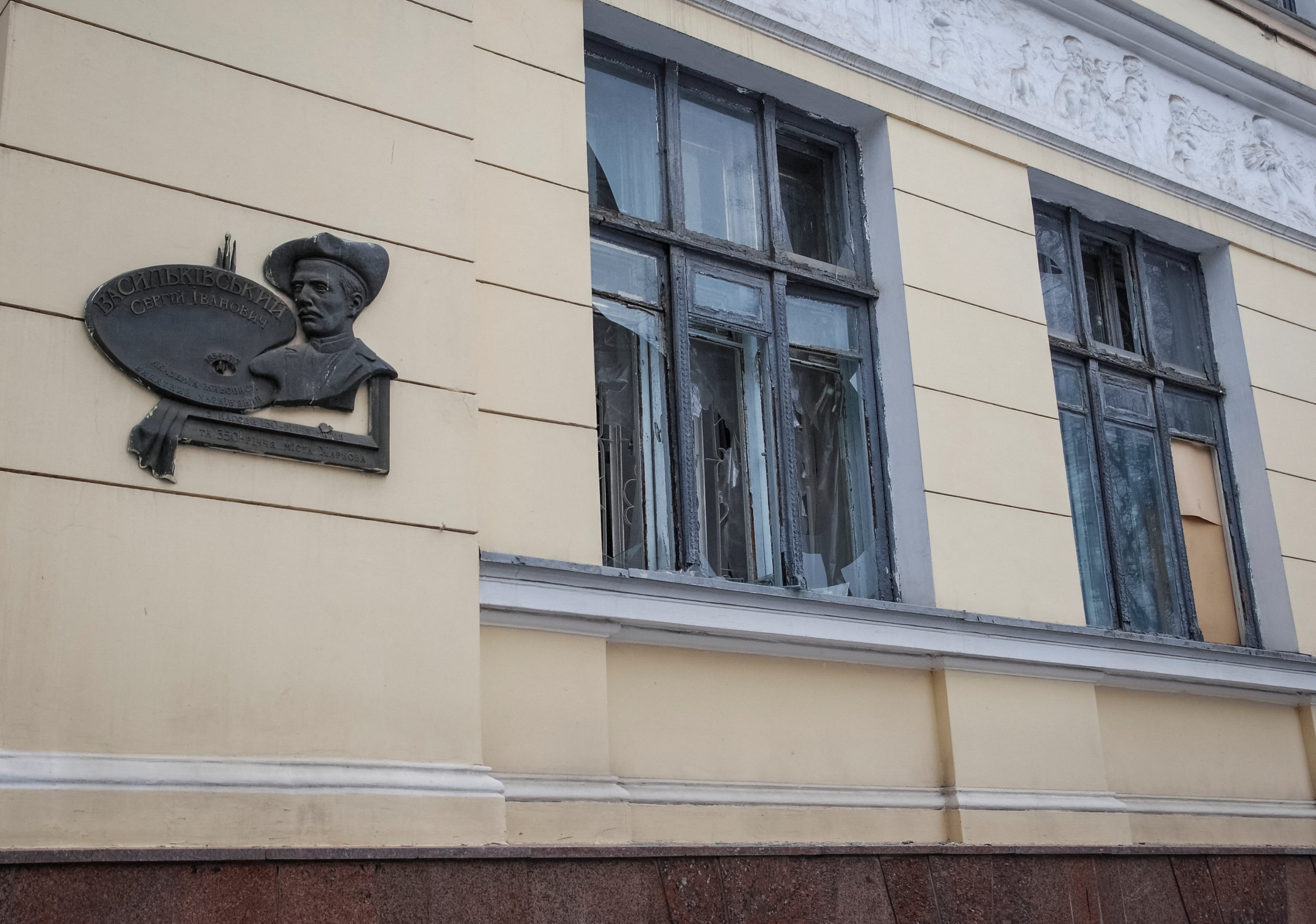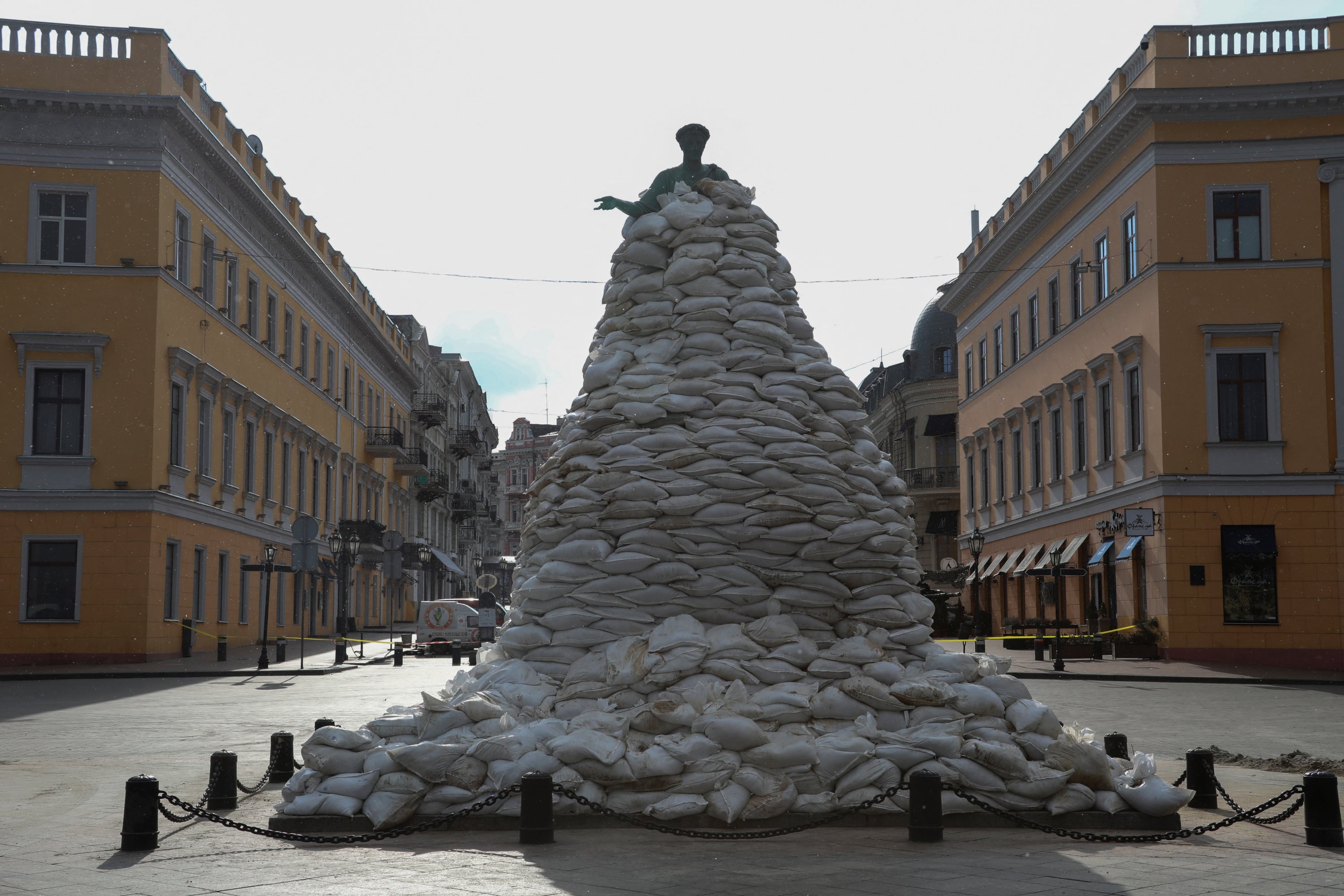© Turkuvaz Haberleşme ve Yayıncılık 2024
The staff of the Kharkiv Art Museum hopes to keep invaluable artworks safe, many of which belong to Russian artists, while Russia hit the city with artillery and airstrikes.
The ornate, imposing building is still standing, unlike some others in Kharkiv, but the windows have been blown out by the blasts, plaster and dust cover the floors and the surrounding streets are covered in debris.

"There are over 25,000 items in our collection," said Maryna Filatova, head of the foreign art department at the museum, adding that it was one of the biggest and most valuable in the country.
"It is simply irony of fate that we should be saving Russian artists' paintings from their own nation. This is simply barbarism," she told Reuters on Wednesday.
Across Ukraine, millions of people have fled the fighting, while many more are staying to repel the advancing Russian forces. Some are trying to save Ukraine's culture and history.
In Odessa on the southern coast, a monument to Duc de Richelieu, a governor of the city in the early 19th century, has been protected by sandbags piled around the plinth and statue up to its shoulders.

Moscow launched what it calls a "special military operation" in Ukraine on Feb. 24 to destroy its neighbor's military capabilities and remove what it says are dangerous nationalists in Kyiv. It denies targeting civilians.
Ukraine and its allies call Russia's actions a brutal invasion that has killed hundreds of civilians and forced millions to flee abroad.
One of the most prized works at the Kharkiv museum is a version of the imposing work by renowned Russian painter Ilya Repin called "Reply of the Zaporozhian Cossacks," which has been taken down from the wall ready to be stored away.
"Basically, it should not be moved," said Filatova of the painting. "Any movement should be avoided. We treat it with great care."
She spoke among the empty, cold galleries with some pictures still hung, while others were propped against walls, waiting to be stowed away.
Filatova and her colleagues were relieved that the collection, which includes works by German painter and printmaker Albrecht Duerer and Dutch masters, remained intact.
But with the windows shattered, it was impossible to control the temperature and humidity inside the gallery. The real damage will be assessed when the war is over.
"Workers, women that are still in town, we will work and do our best to save it all. We are taking the paintings down and will hide them," Filatova said, without specifying where. "We are doing our best to preserve them."
